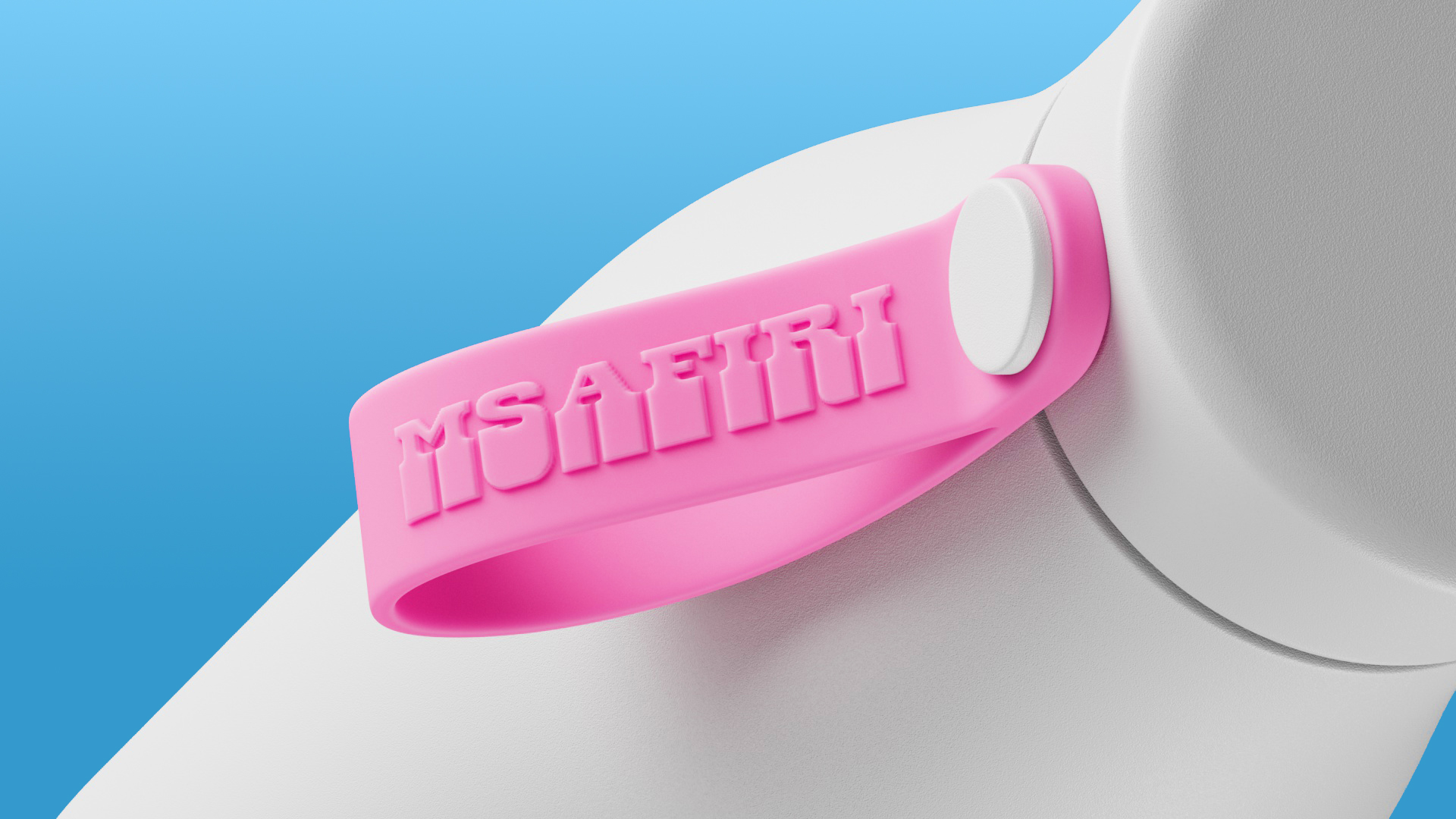Inspired
Seyi Olusanya’s New Danfo Typeface is Inspired by Lagos’ Iconic Danfo Buses

A typical day for a Lagosian – either the trader returning from the food market in mile 12 with their goods or the 9-5er leaving Gbagada to Lekki – likely involves using the commercial bus, Danfo. For over 4 decades, Danfo has been a staple and the most popular mode of transportation within Africa’s biggest city, Lagos.
Ask any Lagosian, and this is how they’ll describe the bus to you: It is painted in yellow, a bright shade of yellow I like to call the Danfo yellow, with two long vertical black strips that run in the middle of its body. It carries between 14-18 passengers and is steered by a rugged relationship between its driver and its conductor, as they dash through the ever-busy streets of Lagos.
But while Danfo is a means of transportation to many, Seyi Olusanya turns our attention to a unique feature of the buses: the unmissable inscriptions plastered on their bodies in bold, cut-out fonts. Popular sayings like “In God We Trust,” “No Condition Is Permanent” “No Hurry In Life” “The Rich Also Cry” No Food For Lazy Man” “Forgive and Forget” “Allahu Akbar” “One Love” “Cry Your Own Cry” “Good Luck,” etc displayed on these buses through brightly coloured stickers. Cut from unique and eye-catching fonts, these messages loaded with everyday wisdom demand instant attention. It’s almost as if they’re saying, “Read me, you must read me!”

For Seyi, the Danfo bus is a palette of inspiration to create a new typeface, which he rightly names Danfo. “Sometime in 2018, I wanted to create a type-led poster inspired by Danfo buses, but I couldn’t find a suitable font anywhere. This was shocking to me because these stickers are so common. I assumed they were printing something that already existed and modifying it with custom cut-outs,” he tells BellaNaija.
And that was the beginning of the creation of the typeface. He began visiting bus parks to take photos and study the document the unique styles of cut-out lettering. “I wanted to learn something new, and building a typeface felt challenging, so I took it up,” he says.
Seyi created Danfo Std in 2018. However, he was always driven to improve it. “I always wanted to improve Danfo Std,” he says. “I built the initial Danfo with little theoretical or practical knowledge—just hunger and raw willpower. I knew its construction could be better. There were no numbers and no punctuation. Google provided my team with many resources, making it the right time.”

Seyi prioritises inclusivity in his typeface designs. Danfo supports over 900 languages, including the entire Google sub-Saharan African character set. This comprehensive support goes beyond just meeting Google Fonts’ requirements. It reflects his commitment to exporting African culture through his design company, Afrotype.
“The more languages a typeface supports,” he explains, “the more diverse the people who can use it. So, right from the beginning, I thought it necessary to ensure that all our typefaces contain full character sets with great language support. Working with Google Fonts helped us with the structure to do that to a high standard.”
One ongoing challenge in the design world is ensuring inclusivity. While typefaces are the visual building blocks of language, most commercially available fonts come from Western countries. This creates a situation where African designers often have limited options that truly reflect their cultural identity.

For example, imagine a brand in Lagos trying to create a marketing campaign that resonates with a local audience. If all the available typefaces have a European aesthetic, it can feel like a disconnect. This is a challenge Seyi is passionate about addressing.
“Typefaces are the physical form our words take. Most commercially available typefaces are British, American, and Swiss. Usually, these typefaces reflect respective cultures, even when designed to be “neutral”. I have designed brand identities for the better part of the last decade, working with many African clients, and we used typefaces that weren’t African, even when these brands wanted to resonate deeply with an African audience. This made me uncomfortable. It felt dishonest, but we had no choice. Now that type-design resources are more readily available, it feels like the perfect time for an African-type design renaissance. This is what we’re witnessing at the moment.”
His vision extends beyond letters on a page. He sees type design as a powerful tool for cultural expression, influencing not just written communication, but the overall presentation of African identity on the global stage.

“We are constantly exporting culture. Presentation is a big deal. Globally exported African talent is deep and authentic. These qualities must translate to marketing and communication. Great type design is the way to go.
There’s the issue of the cliche patterns and angular display-type treatment that the rest of the world recognises as African. These elements are so common and reliable that even Africans who might have initially hesitated have come to accept them. We need more options, more variety, and more authenticity. Expressive type is a great way to address all of these issues.
While Danfo has garnered a lot of attention, Seyi and his company, Afrotype, are already looking ahead. He tells BellaNaija about some upcoming projects and typeface designs in the pipeline.
“Apart from Danfo, we also designed Tac, a single-weight typeface inspired by the wordmark from Festac ’77. That’s also on Google Fonts. We will build more weights for Tac and maybe even a stencil version. We also intend to build a catalogue of Danfo typefaces, at least one with shadows. The current Danfo is the base. We are also working on a typeface tentatively named Isale Eko Slab, which is inspired by Lagos Island’s dense architecture. Exciting times!”
So the next time you design something and yearn to infuse it with African culture, you have a powerful tool at your fingertips. Thanks to Seyi and Afrotype, a typeface that truly embodies your heritage awaits you.
Danfo by @useafrotype is a variable font with a new “Element Shape” axis.
The three main styles reflect different cut-out shapes inspired by the vinyl cut-out lettering of the public transportation buses in Lagos, Nigeria.
Danfo covers all of the Google sub-saharan African… pic.twitter.com/3M8gSKNd7c
— Google Fonts (@googlefonts) May 15, 2024



















